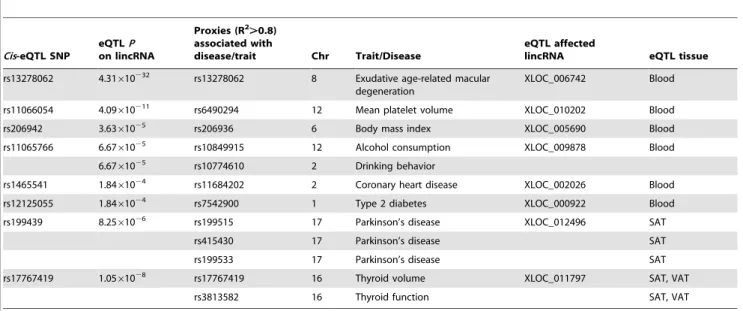Human disease-associated genetic variation impacts large intergenic non-coding RNA expression.
Texto
Imagem


Documentos relacionados
Fig 3. Long noncoding RNA expression in human B-cell subpopulations. A) Distribution of array-derived expression levels across all samples are shown for different gene biotype
Figure 1. Variance of log-transformed gene expression levels in the hippocampus is associated with individual differences in activity in the open field. Gene expression
To investigate if the diurnal expression could be a source of variability on differential gene expression analysis in hippocampus of epileptic rats, we compared expression levels of
The expression of IgG-H in the ischemic hemisphere, normalized to the non-ischemic hemisphere, was significantly greater in the vehicle-treated group as compared to the
Here, we investigated the protein-coding capacities and the expression levels of their isoforms for human known genes, the conservation and disease association of long noncoding
Again, intensity levels for CD99 expression were variable with 11/19 samples presenting moderate/high expression (scores +++ and ++ ); 8/19 presenting low levels of expression and 4/
(A) protein expression normalized by ACTB and calibrated by the level of a reference sample; (B) the ratio of NPM1 protein expression between tumor and matched non-neoplastic
of breast cancer associated with certain metastatic sites exhibit a characteristic genetic expression, and the immunohistochemical expression of the human epidermal growth factor
In accordance with data presented in drug screening, AK-4 compound C39H50O5Si2 displayed strong cytotoxic capability against the growth of two glioblastoma cell lines LN229 and SNB19